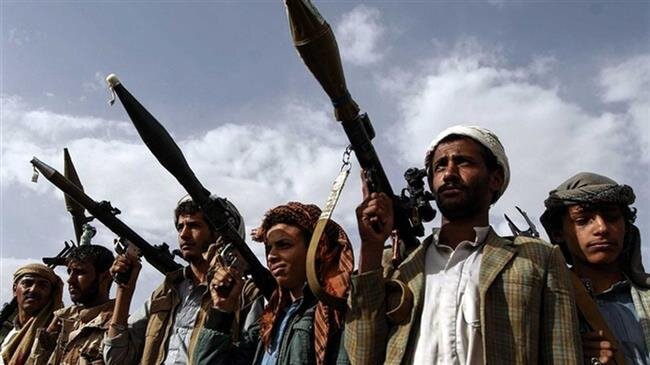Ansarullah’s war games amid Israeli warmongering

TEHRAN: Units of the Fourth Military Region of the Ansarullah Forces in Yemen have conducted large-scale anti-Israel military exercises dubbed the “Devastating Storm Exercise.”
The name of the operation was chosen in reference to the “Operation Storm on Al-Aqsa” carried out by the Palestinian resistance on October 7.
The background to the war games is the promise of the government in Sanaa to launch a major attack on the Israeli occupation in the event of a full-scale war between Tel Aviv and Hezbollah.
Major General Mohammed Abdul Karim al-Ghamari, Chief of the General Staff, and Major General Abdul Latif al-Mehdi, Commander of the Fourth Military Region, directed and supervised the operations.
The two generals said the war games were a significant demonstration of Yemen’s military capabilities and strategic coordination, adding that they were “meticulously planned and executed.”
The exercise involved a diverse range of military units, demonstrating the integration of drone forces, artillery, snipers, anti-tank units, infantry, armored vehicles and engineer units.
The area of operations was divided into different roles for attack and defense, emphasizing the importance of command and control structures and smooth coordination between the various special forces.
At the start of the exercise, Yemeni forces simulated an aggressive attack on virtual enemy camps of Israel and Britain.
Drones played a crucial role in the initial phase, attacking surveillance facilities with precision strikes from 120mm shells.
At the same time, other air units attacked enemy vehicles inside and outside the camps, effectively neutralizing their operational readiness and disrupting surveillance capabilities.
Systematically attacking replica enemy command centers would further exacerbate chaos in the army and lead to a loss of control and coordination in the enemy ranks, the generals said.
In the transition to the following phases, the artillery units increased their fire, concentrating on enemy command and control facilities and artillery positions.
The strategic targeting not only deprived the enemy of the opportunity to support its troops, but also significantly impaired its defensive capabilities in the simulated operational area.
The maneuver also revealed the skills of Yemeni sniper units, who were targeting surveillance cameras mounted on buildings. This further hampered all reconnaissance efforts and put the perceived enemy under constant pressure.
This phase underlined the “agility and adaptability of the Yemeni armed forces in conducting simultaneous offensive operations.”
As the maneuver continued, specialized anti-tank units (RPG gunners) used secret underground tunnels to get close to the enemy’s fortified positions. Their coordinated attacks on the camp’s defenses and the remaining enemy assets in the buildings were critical to achieving decisive tactical victories.
The success of the attack phase culminated in the complete destruction of the intended targets within the simulated Israeli camp.
This included the neutralization of enemy vehicles, command centers and defense installations, thus impressively demonstrating the ability of the Yemeni armed forces to conduct coordinated military operations.
After the attack phase, the exercise transitioned seamlessly into a defensive phase. The Yemeni forces quickly assumed defensive positions to protect their controlled areas from simulated enemy counterattacks.
The defense strategy included strategic positioning, camouflage techniques, and ambush tactics to lure and neutralize advancing enemy forces.
Throughout the exercise, the Yemeni military demonstrated not only its operational strength but also its ability to adapt to dynamic battlefield conditions.
The integration of air, ground and special forces underscores Yemen’s determination to improve its defense capabilities and increase its readiness to respond effectively to potential threats.
The “devastating assault exercise” served as a comprehensive demonstration of Yemen’s military capabilities, strategic planning and operational readiness.
According to military organizers, this was an example of the competence of the Yemeni armed forces in conducting complex military operations and underlined their commitment to defending national sovereignty and security amid a difficult geopolitical environment.



